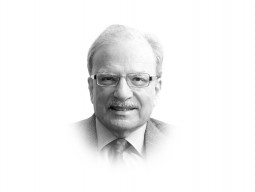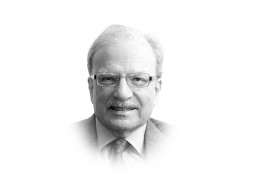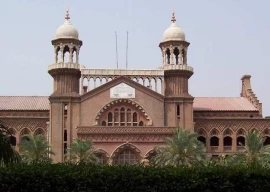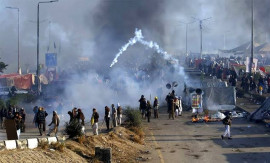
Of the many Pakistani diasporas that have been formed over the last several decades, by far, the largest is in the Middle East. It is spread over several countries in the region and has had the most profound impact on the country its members have left behind. There are no hard estimates of the numbers that have taken up residence in the Middle East. Not only that, the number keeps changing, depending upon the economic health and prospects of the host nations.
Large-scale migration from Pakistan to the Middle East began in the mid-1970s. This movement was prompted by two decisions. The first one was by the oil-producing and exporting nations to embargo the sale of oil to the US. This was to punish the Americans for their support of Israel. That led to a four-fold increase in the price of oil and enormous increases in the revenues earned by the oil-exporting countries. These windfall incomes were used in part to finance the construction of modern infrastructure for which workers were needed. Many of the large construction projects were undertaken by firms that had worked in the Indus water replacement works in Pakistan. They knew well the Pakistani labour market and the agents they had used to hire workers for their projects. The same agents were brought back into service to contract millions of workers needed for the construction boom in the Middle East.
The other important decision leading to the creation of the Middle Eastern diaspora was taken by then prime minister Zulfikar Ali Bhutto. His administration decided to freely issue passports to those who wished to travel to the Arab world. Instead of creating jobs for the unemployed, Bhutto’s nationalisation programme served as a disincentive for investment in the private sector. The rate of growth in job creation slowed down. Migration served as a valve for releasing the pressure at home.
While the unskilled and semi-skilled workers formed the bases on which the diasporas were built in Britain and the Arab states, there were some differences that were to significantly affect the nature of the two communities. Unlike the mill workers who went to Britain, the construction labour migrating to Arab lands was engaged on short-term contracts. They were expected to return home after the contract term was over. This way of meeting the continuing need for unskilled and semi-skilled workers created a circular flow between Pakistan and the Middle East. While at the peak of the construction boom there may have been four million or so Pakistanis working in the oil-exporting countries, the total over time ran into tens of millions. The migration to the Middle East was one of the more important reasons for the arrival of Wahhabism into Pakistan. Notwithstanding this negative influence of the migration, there were several positive economic consequences as well. The two of the more important ones were the remittances that came from the Pakistanis in the Middle East and the contribution made to the economy by the infusion of Arab capital.
A bit over 60 per cent of the total remittances received by Pakistan in 2011-12 — estimated at $13 billion — came from the Arab countries. Of this amount, Saudi Arabia with 27 per cent and the UAE with 22 per cent had the largest shares.
There was a significant amount of investment in Pakistan by the firms in the Middle East. This investment was motivated in part by the Pakistani professionals, who held senior positions in the enterprises that came to Pakistan. The sectors that were favoured included real estate, banking and telecommunications. These investments, while welcomed in Pakistan, created contingent liabilities in the sense that their earnings were in rupees, which needed to be converted into foreign currency before repatriation. In a way, some of the money that came in as worker’s remittances went out as repatriated profits by the firms from the Middle East. In other words, migration to the Middle East by millions of Pakistanis produced mixed results, some positive and some negative.
Published in The Express Tribune, March 3rd, 2013.
COMMENTS (19)
Comments are moderated and generally will be posted if they are on-topic and not abusive.
For more information, please see our Comments FAQ












































@John the Baptist
hey we dont have sunnis killing shias like they do in the land of pure. dont know where u getting ur information from? mr.know-it-all.....
@John the Baptist: Shias are about 15% of Muslim population in India not very different from the 20% in Pakistan. What's your point? If you want to continue to blame the poor labourers for the radicalization instead of the establishment who did this first for the Afghan jihad and later to try to win Kashmir using non-state actors, be my guest. I will not change my mind just because you are rude.
@gp65:
Miss Know-it-all, do you know the split between Shias and Sunnis in the indian Muslim population? Therein lies the rejection of your inch deep scholarship!
Bhutto facilitated the Afghan religous goups from Kabul university in the early 70's long before the Soviet invasion. These groups started a rebellion Z.A Bhutto sew the seeds and Gen Zia took it further.
It could been much better if the writer would have given a paragraph about the poor working conditions & the exploitations of the laborers at the behest of their Arbabs (the Arab sponsors).
India has the same number of Muslims as Pakistan and about the same number working in Gulf. Why did that not bring Wahabism to India?Answer, it is Pakistani establishment that radicalized the polity systematically and by design to use the poor radicalized masses as cannon fodder first in Afghanistan and then In Kashmir. Don't blame the poor hard working labourers whose remittances are keeping the country afloat.
The arrival of in Pakistan was not due to Pakistani workers in the Middle East but to the policies of General Zia ul Haq.
Mr. Burki's conclusion that “The migration to the Middle East was one of the more important reasons for the arrival of Wahhabism into Pakistan” can only be described as simplistic and peripheral. Mr. P. R. Sharma's assertion above that "Reasons for the spread of Wahabbism in Pakistan can be traced elsewhere" not only needs to be applauded for its' astuteness but needs to be explored in the interest of being honest with history. The spread of Wahabism in Pakistan can be safely attributed to the American financing of the war against Soviet Union in Afghanistan. U.S. with the alliance of Pakistan's Ziaul Huq and Saudi Arabia funded and initiated Madrasas and recruited Taliban's and religious zealots from all over the Middle East and other parts of the world to create the "Mujahideens" to fight the Soviets. The fruits of that 32 year old campaign are being reaped now by the Pakistanis.
Author "The first one was by the oil-producing and exporting nations to embargo the sale of oil to the US. This was to punish the Americans for their support of Israel. That led to a four-fold increase in the price of oil and enormous increases in the revenues earned by the oil-exporting countries"
Any embargo on US( for restricting sale of oil )who is one of the major consumer of the oil in the world would lead to piling of inventory of oil which will result in the oil price crashing nosedive and not four fold increase the oil prices. . Oil price increased by the cartel of OPEC ( Oil producing and exporting countries ) by their agreement to keep the aggregate oil production low ( lower supply) than the demand which is still persisting..
"The migration to the Middle East was one of the more important reasons for the arrival of Wahhabism into Pakistan"
The unskilled migrants in middle east have been paid lowly and does not have the opportunities to interact with the Arabs( forget about socializing with them). Migrants use to reside in a cluster in the company of their fellow Pakistani migrants only and remain unaffected by the Wahabbism. Reasons for the spread of Wahabbism in Pakistan can be traced elsewhere. In nut shell it can be said that expats have contributed positivelyfor the well being of economy of Pakistan.
“. The migration to the Middle East was one of the more important reasons for the arrival of'"AIDS (no body is talking about this). Why?
So what does that conclude? I think that the writer forgot to mention that instead of channeling the money from non resident Pakistanis, the vision deficient governments, kept them in current account to pay for their plush offices and residences. The rich in Pakistan, don't pay anything in taxes and plunder Pakistan's resources and take the money out of the country. Whereas, the poor are subject to indirect taxes, which in the first place should have been pushed to rich people.
The private sector / government should make a plan to channel this money in to ground breaking science and technology sector instead of just property. Don't short sell us.
We know all that, so what more are you trying to tell us?
Punjabi Film "Dubai Chalo" was the bi-product of this craze.
I bet hardly any Pakistani realizes this but according to the IMF the GDP per capita of Saudi Arabia is only $24,000. Its GDP per capita is below most European countries. No this is not a mistake. It is correct. . Thirty years ago Saudi Arabia had one of the highest GDP per capita in the world. This is what uncontrolled population growth has done to Saudi Arabia. In 1950 it had 3 million people but now it has 28 millions. The same population dynamic is being played out throughout the Gulf. The Arab spring will a tea party compared to the explosion that Saudi Arabia will experience . Of course, this will have colosal consequences for Pakistan. I see a day when these overseas Pakistanis will return and the remittances to which we are addicted will end.
Good Article. I myself is a middle eastern Pakistani
". The migration to the Middle East was one of the more important reasons for the arrival of Wahhabism into Pakistan. Notwithstanding this negative influence of the migration, "
Negative influence? A little too judgemental on the religious beliefs.
"...The migration to the Middle East was one of the more important reasons for the arrival of Wahhabism into Pakistan. Notwithstanding this negative influence of the migration..."
In your previous post, you mentioned how Pakistani labour migrants jealously stuck to their Pakistani traditions in the UK and did not assimilate. It then amuses me why could migrants to middle-east not do the same and turned easily to wahhabism.
How negative a role the religion plays in blinding good and bad?? They shunned civility in the UK and embraced evil in middle east.
Well balanced and economically astute analysis. The net impact of the supposed money spinner of remittances should be weighed against the cost we have paid due to the simultaneous import of Wahabism into our Sufi land, which has led to both a false Arabization of our society and a real Somalification of our political and administrative institutions.
While the remittances sent by labourers from the Middle East helps keep the country afloat, the rich and affluent in Pakistan gos about evading taxes. Worst still, the rich and affluent when in the Middle East end up hand in glover with the Arab rulers to exploit the labourers as they do in Pakistan. Evidence in the fact that your article and many others like it, gloss over the d horrendous treatment metted out to Pakistani labourers and how the Pakistani state facilitates it.